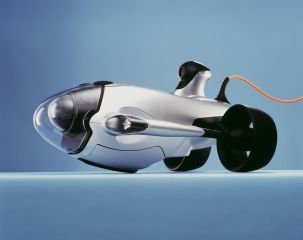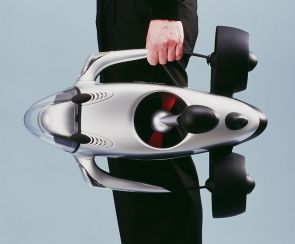| Issue 2 |
When I first received the advert for my current job from the recruitment agency I paid it little attention. I had been working in my previous job, in the electronics department of an industrial power tools manufacturer, for the 4 years since I had left Oxford, but a number of factors made me feel it was time to move on. This particular advert from the agency really did nothing to inspire me, but I was told that the MD of the company was keen to meet me and so I thought I might as well see what it was all about. What I found when I turned up for interview was diametrically opposed to the situation at the power tools company. Instead of the procedures, control and production focus of manufacturing industry, I found a small, creative and enthusiastic team of engineers all working on the research and development phase of a single project. The opportunities for expanding my engineering skills and creativity and for learning from the people and the project were clear to me and so it was that I ended up working for H2Eye Ltd - the creators of Spyfish®.
Spyfish® is described as a Submarine Telepresence Vehicle (STV), which translates as a remotely operated vessel (ROV) that relays live video of the underwater world to the user who is safe and dry in a boat on the surface. Spyfish® has been designed as a leisure product, initially something to complement the luxury boating market. The Spyfish® system comprises the ROV or Fish, cable, topside box and screen and wireless hand controller. The Fish has two horizontal and one vertical thruster that use sealed brushless dc motors. There are also two headlights to improve the illumination in poor light conditions and to enable night diving. The 150m cable is used only for video and communications and not for power so that it can be light and manageable. Navigation data in the form of compass heading and depth reading are sent to the topside and displayed along with the live video feed. And the hand controller gives the user intuitive control of Fish movement and graphical user interface. The entire system is Lithium Ion battery powered and portable, differentiating the Spyfish® system from other commercial types of ROV.

My work on Spyfish® began with the motors systems and soon included the power systems in general. During the course of the project I have developed skills in switching power supplies, which play an important part in the Spyfish® system, digital and analogue circuit design and become fluent in microcontroller firmware. Four years and a number of personnel changes later, I am today responsible for most of the electronics in the whole system.
Because the team is small, each member is almost solely responsible for large sections of the project. For my own part, this means taking various aspects of the electronic system right through from concept, circuit design and PCB layout to advanced pre-production prototype. Because each stage of this development is directly under my control I can make changes very quickly. And because I am sitting across a desk from the mechanical engineers, the integration of electronics and mechanics can be both complex and fluid. Indeed this high level of integration is the most important feature of the engineering of Spyfish®. Industrial design and hydrodynamics have dictated the exterior form of Spyfish® but have left some very odd shaped volumes in which to fit the various electronic and electro-mechanical systems. Without the dynamic nature of the engineering team, the level of integration required to realize Spyfish® would have been a great deal harder to achieve.
The different engineering disciplines inevitably retain some degree of separation, but working so closely with mechanical, software and other electronics engineers has given me a valuable appreciation of all areas.
We have had a great deal of success over the years of development. At present we have a number of fully working systems which we can use to test the robustness of our technology or to try out improvements. Initially we are able to run a system in our small test tank, but we have also put Spyfish® through its paces in more exotic locations around the world - locations where it will eventually be enjoyed by the user. Some of the video footage that we have recorded on these trips is truly stunning and helps to remind us of what we are aiming for. The images and video on the website are all genuine!
The project is currently moving from the design and development phase towards production and so the project focus, and consequently the work to be done, is changing. Whether the product turns out to be a commercial success remains to be seen, but one thing is certain, I have thoroughly enjoyed working on the design of Spyfish® in an environment such as H2Eye. I am aware that opportunities such as this do not come along often in the course of a career.

| << Previous article | Contents | Next article >> |
| SOUE News Home |
Copyright © 2003 Society of Oxford University Engineers |
SOUE Home |